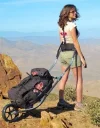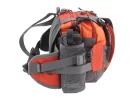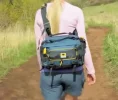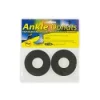My wife has a pacemaker and, because she is thin, the shoulder straps of her backpack put a lot of pressure on her pacemaker and make it just about impossible to carry. It's particularly bad if she does up the chest strap.
If anyone has had this challenge, we'd love to hear suggestions for carrying the backpack but taking the pressure off the pacemaker!
Thanks, Allan
Hi Allan,
My sister had a Pacemaker inserted prior to our walking the 300 plus Camino kms from Leon to Santiago beginning Sept 12th this year.In June, during training walks, she was getting some breathlessness and heaviness in her legs, initially uphill, but then even on flat walking. At first, there was a sense of dejection that perhaps she had waited one year too long, but tests revealed heart block resulting in pacemaker insertion just over 6 weeks prior to our planned departure date from Australia.
She needed to rest whilst awaiting tests and after procedure, so all in all there were approx 4 - 5 weeks that we had all but having given up on the idea that we would walk this year. This Forum repeatedly reassures people that the individual's Camino begins from the day she/he conceives the idea of committing to it, and so it was for us. Her Cardiologist remained confident she would do it, and even 2 'fine-tuning' appts. in last few days before we left were accommodated.
She hoped, but was not obsessed by needing, to carry her backpack, and was prepared at any time, to courier it onwards. She also is slim, and new pacemaker protruded outwards. It didn't occur to us to not use her tried, trusted and used backpack, but we experimented - raised and loosened the chest strap to "sit" the shoulder strap wider, and tilted it away from body midline with a small rolled towel. I applied a waterproof, hypoallergenic padded dressing (able to be left on for 5 to 7 days) directly over the entire contour of pacemaker, which provided the reassurance of cushioning.
She carried 7kgs+ setting out each of 15 and half days we walked. We paced ourselves to do 19 to 24kms daily, with one short day of 15kms and a long 31km day to just get some experience of distance many others walk daily. We became increasingly adept at good positioning of the backpack as days went on, and whilst she would have been perfectly accepting of sending backpack on, she never felt the need to do so on the wonderful Camino experience that was ours.
Buen Camino to you both. The backpack issue will be resolve satisfactorily, I have no doubt, and will just be incidental to a special time in your lives


















